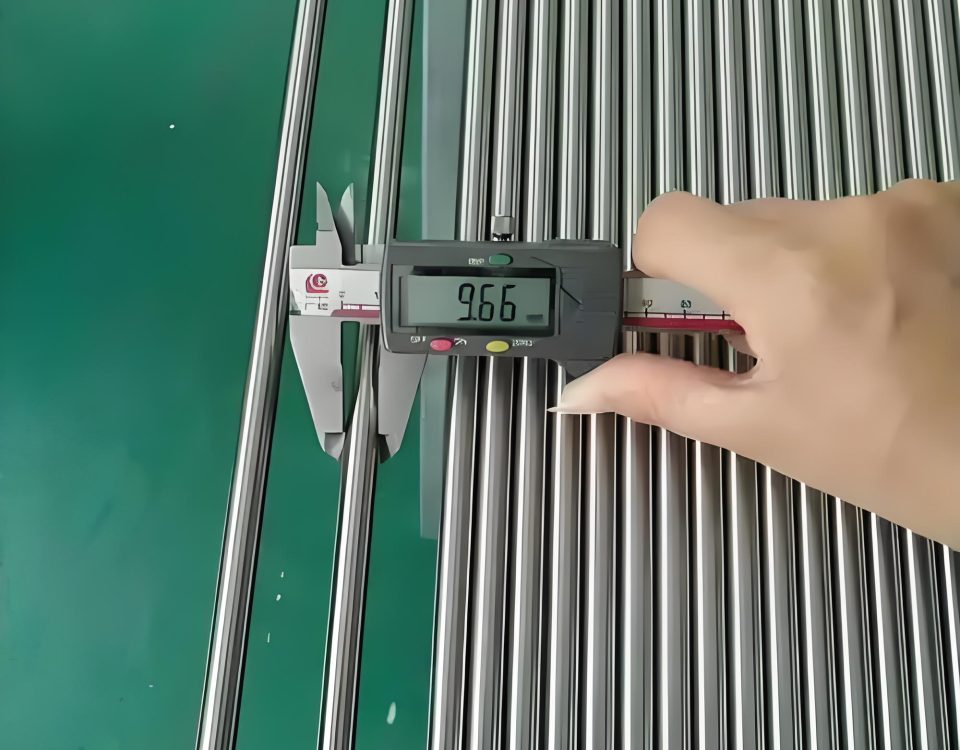
Service Life Prediction of Polyethylene Coated Steel Pipe
October 1, 2024
Effect of Pipe Diameter on Electrochemical Behavior of 304 Stainless Steel Pipes in Tap Water
October 5, 2024Designing Application Pressure and Temperature for Chemical Pipelines: A Comprehensive Guide
Introduction
In the chemical industry, the design of pipelines is a critical aspect that ensures the safe and efficient transport of various substances. Two key parameters in this design are application pressure and application temperature. Properly designing these parameters is essential to maintain the integrity of the pipeline and prevent accidents. This article provides an in-depth exploration of the factors involved in designing application pressure and temperature for chemical pipelines, offering insights into best practices and considerations.
Understanding the Basics
What is Application Pressure?
Application pressure refers to the internal pressure within a pipeline that is required to transport a chemical substance from one point to another. It is a crucial factor in pipeline design, as it influences the material selection, wall thickness, and overall structural integrity of the pipeline.
What is Application Temperature?
Application temperature is the temperature at which a chemical substance is transported through a pipeline. It affects the viscosity, flow rate, and chemical stability of the substance, as well as the material properties of the pipeline itself.
Factors Influencing Application Pressure and Temperature
Chemical Properties
The properties of the chemical being transported play a significant role in determining the application pressure and temperature. Factors such as viscosity, density, and reactivity must be considered to ensure that the pipeline can safely and efficiently handle the substance.
Material Selection
The choice of material for the pipeline is influenced by both pressure and temperature requirements. Materials must be selected based on their ability to withstand the specific conditions of the application, including potential chemical reactions and thermal expansion.
Environmental Conditions
External environmental conditions, such as ambient temperature and atmospheric pressure, can impact the design of application pressure and temperature. These factors must be accounted for to ensure the pipeline’s performance and longevity.
Designing for Application Pressure
Calculating Pressure Requirements
To determine the appropriate application pressure, engineers must consider the following:
- Flow Rate: The desired flow rate of the chemical substance will influence the required pressure to maintain consistent flow.
- Pipe Diameter: The diameter of the pipeline affects the pressure needed to achieve the desired flow rate.
- Friction Loss: Pressure loss due to friction within the pipeline must be accounted for in the design.
Selecting Pressure-Rated Materials
Materials used in pipeline construction must be rated for the specific pressure conditions of the application. This includes considering factors such as tensile strength, corrosion resistance, and fatigue limits.
Safety Margins
Incorporating safety margins into the design is essential to account for potential fluctuations in pressure and prevent pipeline failure. This involves selecting materials and components that can handle pressures beyond the expected maximum.
Designing for Application Temperature
Determining Temperature Limits
The temperature limits for a chemical pipeline are determined by the properties of the chemical substance and the material of the pipeline. Engineers must consider:
- Thermal Expansion: The expansion and contraction of materials due to temperature changes can affect the integrity of the pipeline.
- Chemical Stability: The temperature must be maintained within a range that ensures the chemical remains stable and does not degrade or react undesirably.
Insulation and Heat Tracing
To maintain the desired application temperature, pipelines may require insulation or heat tracing. Insulation helps prevent heat loss, while heat tracing systems maintain or raise the temperature of the substance within the pipeline.
Material Compatibility
Materials must be selected based on their ability to withstand the specific temperature conditions of the application. This includes considering factors such as thermal conductivity, melting point, and resistance to thermal shock.
Best Practices for Pipeline Design
Conducting Thorough Risk Assessments
Before finalizing the design, engineers should conduct comprehensive risk assessments to identify potential hazards and mitigate risks associated with pressure and temperature variations.
Regular Monitoring and Maintenance
Implementing regular monitoring and maintenance protocols is essential to ensure the ongoing safety and efficiency of chemical pipelines. This includes routine inspections, pressure testing, and temperature monitoring.
Compliance with Industry Standards
Adhering to industry standards and regulations is crucial in the design and operation of chemical pipelines. These standards provide guidelines for safe pressure and temperature limits, material selection, and construction practices.
Conclusion
Designing application pressure and temperature for chemical pipelines is a complex process that requires careful consideration of various factors, including chemical properties, material selection, and environmental conditions. By following best practices and adhering to industry standards, engineers can ensure the safe and efficient transport of chemical substances, minimizing the risk of accidents and maintaining the integrity of the pipeline.
FAQ
What factors influence the design of application pressure for chemical pipelines?
Factors include the chemical properties, flow rate, pipe diameter, and friction loss. Material selection and safety margins are also crucial considerations.
How is application temperature determined for chemical pipelines?
Application temperature is determined by the chemical’s properties and the material of the pipeline. Factors such as thermal expansion, chemical stability, and material compatibility are considered.
Why is material selection important in pipeline design?
Material selection is critical to ensure the pipeline can withstand the specific pressure and temperature conditions of the application, preventing failure and ensuring safety.
What role do insulation and heat tracing play in pipeline design?
Insulation and heat tracing help maintain the desired application temperature, preventing heat loss and ensuring the chemical remains stable during transport.
How can engineers ensure compliance with industry standards in pipeline design?
Engineers can ensure compliance by adhering to established guidelines for pressure and temperature limits, material selection, and construction practices, as well as conducting regular risk assessments and maintenance.













-steel-pipe.jpg)